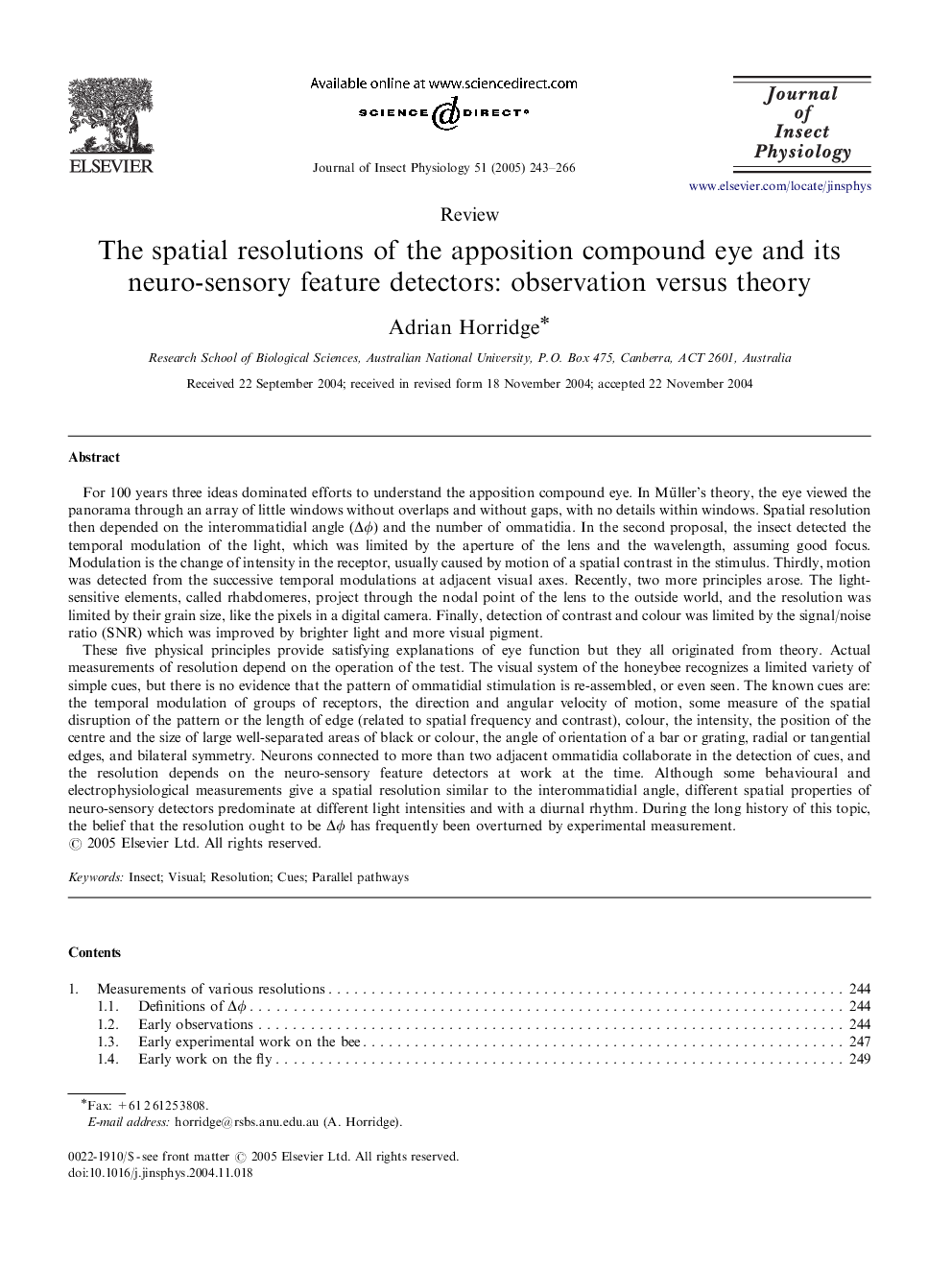| Article ID | Journal | Published Year | Pages | File Type |
|---|---|---|---|---|
| 9147605 | Journal of Insect Physiology | 2005 | 24 Pages |
Abstract
These five physical principles provide satisfying explanations of eye function but they all originated from theory. Actual measurements of resolution depend on the operation of the test. The visual system of the honeybee recognizes a limited variety of simple cues, but there is no evidence that the pattern of ommatidial stimulation is re-assembled, or even seen. The known cues are: the temporal modulation of groups of receptors, the direction and angular velocity of motion, some measure of the spatial disruption of the pattern or the length of edge (related to spatial frequency and contrast), colour, the intensity, the position of the centre and the size of large well-separated areas of black or colour, the angle of orientation of a bar or grating, radial or tangential edges, and bilateral symmetry. Neurons connected to more than two adjacent ommatidia collaborate in the detection of cues, and the resolution depends on the neuro-sensory feature detectors at work at the time. Although some behavioural and electrophysiological measurements give a spatial resolution similar to the interommatidial angle, different spatial properties of neuro-sensory detectors predominate at different light intensities and with a diurnal rhythm. During the long history of this topic, the belief that the resolution ought to be ÎÏ has frequently been overturned by experimental measurement.
Related Topics
Life Sciences
Agricultural and Biological Sciences
Insect Science
Authors
Adrian Horridge,
